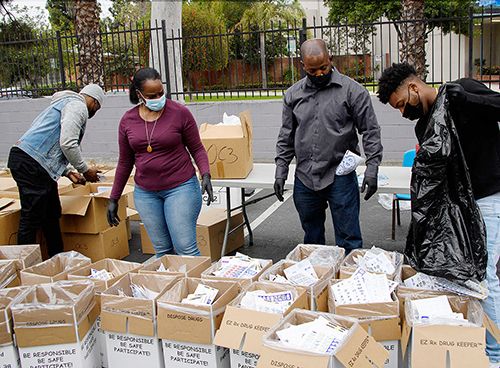Over the last eight years, 81 million prescription opioids were sent to a population of fewer than 100,000 in one of the most decimated counties in the United States by the nation’s three biggest distributors.
It was published on July 4th, roughly one year after a trial involving Huntington and Cabell County, which were featured in an Oscar-nominated documentary on the effects of prescription opioids, was concluded.
Between 2001 and 2017, Cabell County’s death overdose rate rose from 16.6 per 100,000 residents to 213.9 per 100,000, according to the ruling.
To the county’s and city’s dismay, Judge Faber exonerated three drug distribution corporations — AmerisourceBergen, McKesson, and Cardinal Health, saying that “although there is a natural impulse to assign guilt in such circumstances,” he added, “they must be judged not on compassion, but on the facts and law.”
Decisions like these show how difficult it is to pin down who is responsible for a decades-long catastrophe in which a wide range of parties were involved, including pharmaceutical companies and chains, physicians and government organisations in charge of drug regulation.
Pharmacy orders are normally fulfilled by trucking drugs from the manufacturer to hospitals, medical facilities and pharmacies. The inventory of the drug distributor is also managed. It is expected that distributors adhere to legal restrictions imposed for banned drugs like prescription opioids and have an internal monitoring mechanism in place to identify suspicious orders. Distributors should have checked pharmacies that sought large supplies of addictive medicines in tiny areas, according to lawyers representing the city and county.
A judge in New York disagreed and said: “At most, distributors can notice increases in dispensers’ orders that may be traceable to physicians who may be breaking medical standards deliberately or accidentally. Distributors, on the other hand, are not pharmacists who are capable of seeing potential red flags in a prescription.”
“Public nuisance” claims have been used often in opioid lawsuits, but so far they’ve had mixed success in many state and federal trials. The court rejected this legal argument, which has been widely employed throughout the country.
This year, the three distributors reached an agreement with states and local governments to resolve hundreds of cases, in which they promised to pay $21 billion over the next 18 years for addiction treatment and prevention programmes. As a result, Cabell County and Huntington, which is sometimes referred to as “ground zero” for the issue, declined to sign on, thinking they could collect more money by pursuing a lawsuit against the state. Over $2 billion has been requested from the firms.
As a professor of law at the University of Georgia, Elizabeth Burch has been carefully following the nationwide opioid lawsuit.
West Virginians were referred to as “pillbillies” and Oxycontinville by AmerisourceBergen in emails that were shown in court by the county and city’s attorneys. According to a senior corporate official, the samples were just instances of workers displaying job exhaustion.
Cardinal Health claimed in a statement that it has a robust screening process in place. Prescription drugs are not manufactured, marketed or prescribed by distributors; they are simply delivered to hospitals and pharmacies through a secure delivery channel, where they are dispensed to patients according to doctor-ordered prescriptions.
Providing access to essential pharmaceuticals while also preventing the diversion of prohibited substances has become an increasingly difficult task for pharmaceutical distributors, according to AmerisourceBergen.
Drug diversion and misuse must be dealt with a holistic strategy encompassing private enterprise, government, healthcare professionals, and patients, according to McKesson. “We exclusively deliver restricted medications, including opioids, to D.E.A.-registered and state-licensed pharmacies.”
This decision is devastating to our city and the people of Huntington, but we will continue to persevere in the face of adversity,” the mayor of Huntington, Steve Williams, said in a statement, calling it “a blow to our town.”
Residents “should not have to shoulder the primary duty of ensuring that an outbreak of this proportions never develops again,” he said.
In a joint statement, attorneys representing Cabell County and Huntington, as well as a nationwide opioid plaintiffs’ executive committee, expressed dismay.
Witness testimony, corporate papers, and a vast amount of data “showed these defendants were responsible for establishing and supervising the infrastructure that inundated West Virginia with opioids,” they said in their statement. That outcome is irrelevant; our gratitude goes out to all those who submitted their evidence in order to shed light on what really happened. “
It’s up to the county and the city whether or not to file an appeal.
Some other countries were successful in court despite taking the risk of pressing their claim. Washington state likewise declined to join the national settlement, went to trial against the distributors and settled in May for $46 million more than it would have earned in the national settlement. In June, Oklahoma also reached a deal with the distributors for more money than the national settlement would have provided.
The state of West Virginia had settled its charges against the distributors for a total of $73 million years ago, but local governments were free to pursue their own litigation against the distributors.
Two more West Virginia counties and cities are suing three distributors in a separate action that was set to begin on Tuesday in state court by the same attorneys who were involved in the one that was dismissed on Monday. However, the commencement date was postponed in court on Tuesday.
